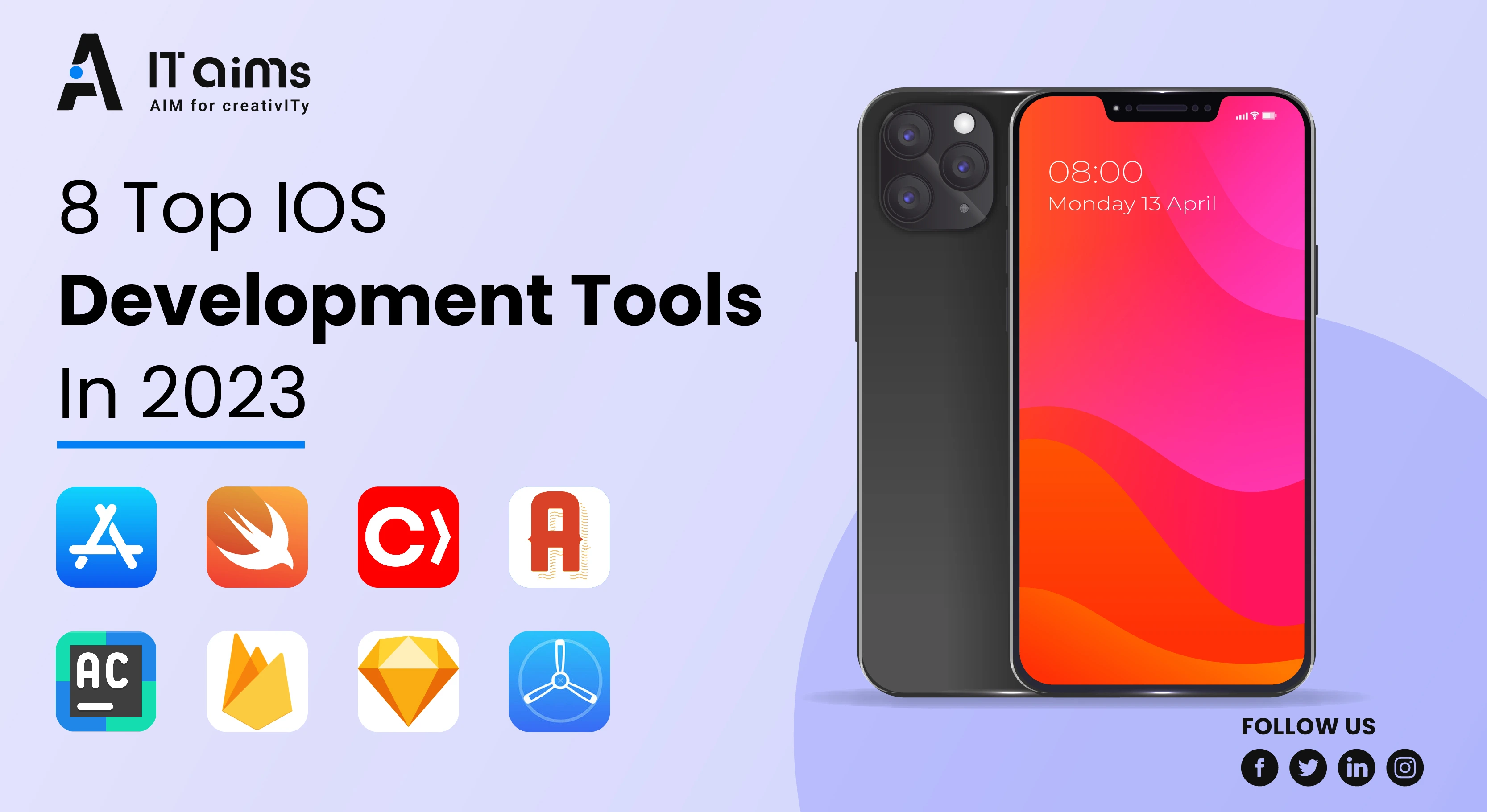
8 Top IOS Development Tools In 2023
In today's digital world, the development of mobile applications is growing at a rapid pace, and iOS app development is no exception. iOS app development is a lucrative field, and developers are continuously looking for the best iOS development tools to create high-quality apps. In this blog, we will discuss some of the best iOS development tools that will be trending in 2023.
1. Xcode
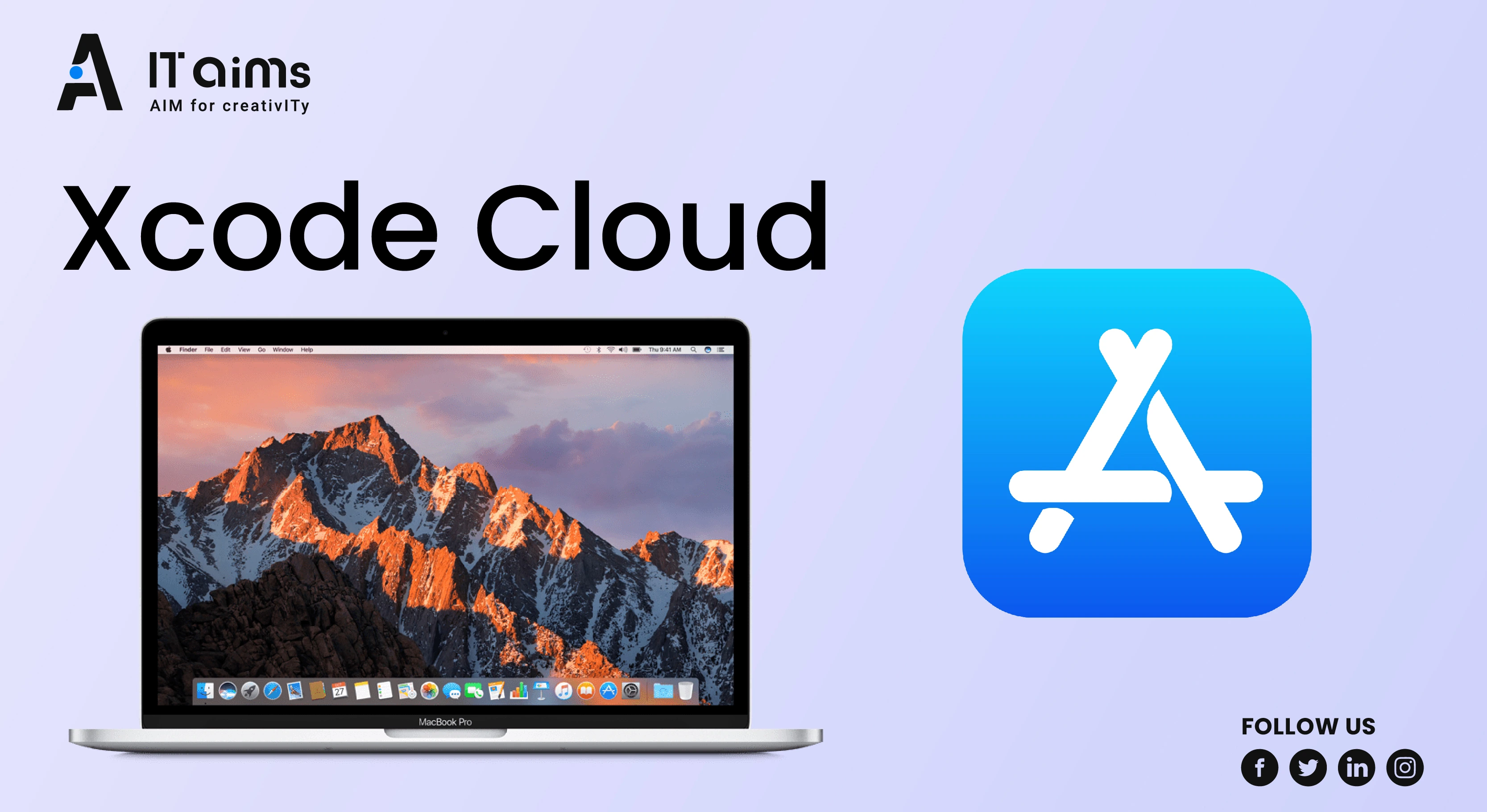
Xcode is a widely used integrated development environment (IDE) for building iOS applications. It comes with a set of development tools and supports multiple programming languages, such as Swift, Objective-C, and C++. Xcode enables developers to create iOS apps with smooth user interfaces, interactive animations, and robust performance.
Features:
- Interface Builder: allows developers to create visually appealing user interfaces using drag-and-drop tools.
- Debugging: offers comprehensive debugging tools that help developers quickly identify and fix issues in their code.
- Performance Analysis: this allows developers to analyze the performance of their apps and identify potential bottlenecks and memory leaks.
- Source Control: comes with built-in source control integration, allowing developers to manage their code repositories within the IDE.
- Simulator: includes an iOS simulator that lets developers test their apps on virtual devices before deploying them to real devices.
Pros:
- Comprehensive IDE: offers a wide range of features and tools that make it easy for developers to create high-quality iOS apps.
- Swift Integration: designed to work seamlessly with Swift, Apple's programming language for iOS development.
- Free: available for free on the Mac App Store, making it accessible to all iOS developers.
Cons:
- Platform-Specific: designed specifically for iOS development and is incompatible with other platforms.
- Steep Learning Curve: this can be challenging for new developers to learn, particularly those without prior experience in iOS development.
One of the most famous iOS apps built with Xcode is Instagram. Instagram's iOS app offers a seamless user experience with a clean and intuitive interface, high-quality images, and fast load times. Xcode's comprehensive development tools and performance analysis capabilities were essential in ensuring that the app ran smoothly on various iOS devices.
2. Swift
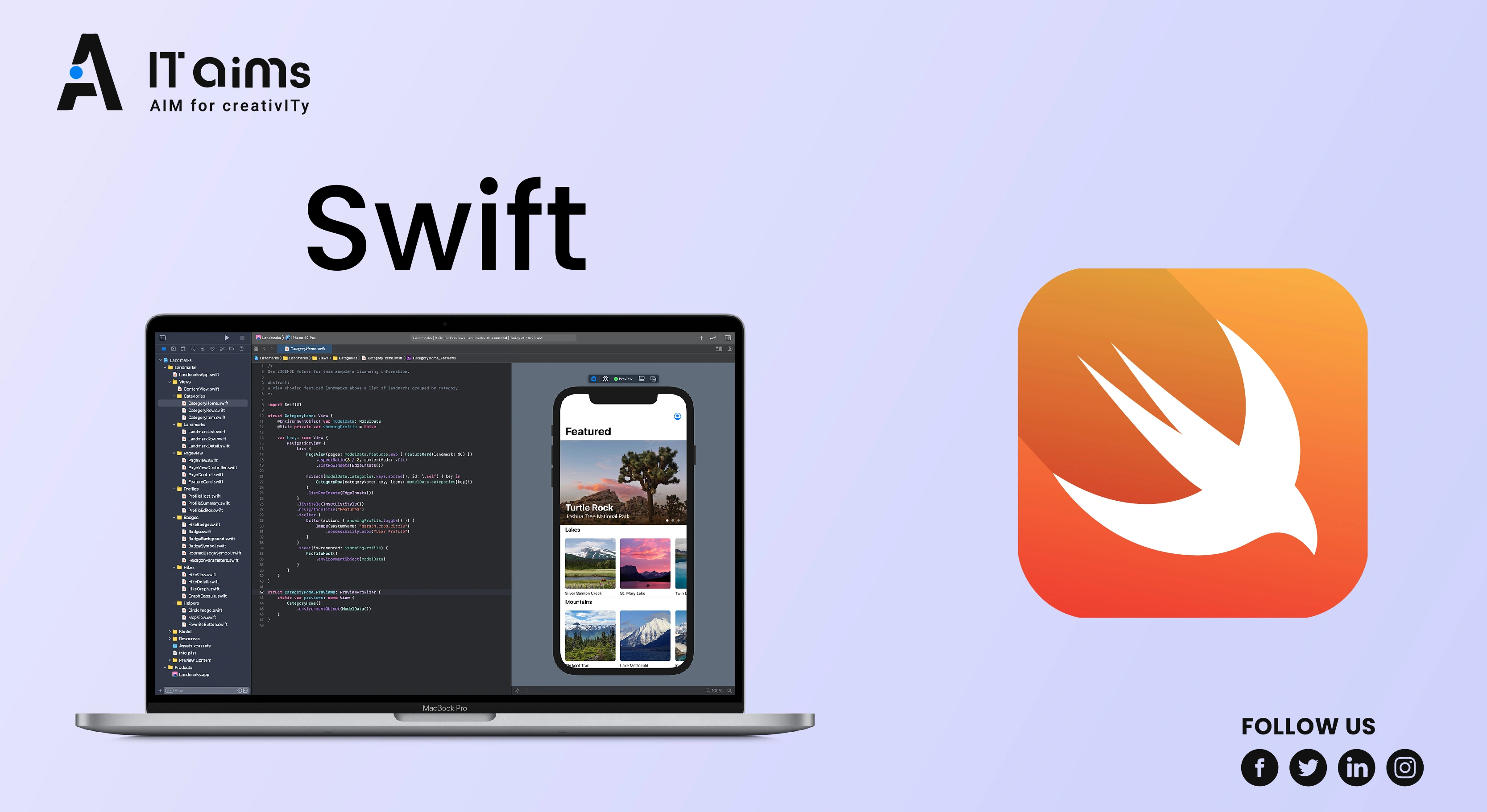
Swift is a modern programming language developed by Apple that is optimized for building iOS applications. It is easy to learn and has a simple syntax that enables developers to write efficient code quickly. Swift also provides powerful features like Optionals, Closures, and Type Inference, making it easier for developers to write more reliable and safe code. Swift provides a range of features that make it a great choice for developers. Some of the key features of Swift include:
Features:
- Easy to learn and use, with a simple syntax that is similar to many other programming languages.
- Provides powerful features like Optionals, Closures, and Type Inference, making it easier for developers to write reliable and safe code.
- Offers great performance due to its use of modern compiler technology and optimized syntax.
- Supports dynamic libraries, making it easier to manage code reuse and app size.
- Provides interoperability with Objective-C, allowing developers to use Swift with existing iOS code.
Pros:
- Swift is a modern programming language that is designed specifically for iOS app development, making it optimized for the platform and providing many useful features.
- It is easy to learn and use, with a simple syntax that enables developers to write efficient code quickly.
- Swift provides powerful features that can help developers write more reliable and safe code, reducing the likelihood of errors and bugs.
- Swift offers great performance, thanks to its use of modern compiler technology and optimized syntax.
- Its interoperability with Objective-C makes it easier for developers to use Swift with existing iOS code.
Cons:
- Swift is a relatively new language, so there is not as much documentation and support available as there is for more established languages like Objective-C.
- It may take some time for developers to get used to the syntax and features of Swift if they are coming from another programming language.
- There may be some compatibility issues with older iOS devices that do not support the latest version of Swift.
Famous Apps Built Using Swift
- Lyft: This popular ride-hailing app is built using Swift, providing a seamless user experience with real-time updates and payment processing.
- LinkedIn: The LinkedIn app is also built using Swift, providing users with a reliable and intuitive interface for networking and job searching.
- Airbnb: Airbnb, a popular travel booking app, uses Swift to provide a seamless booking and payment process for users.
3. CocoaPods
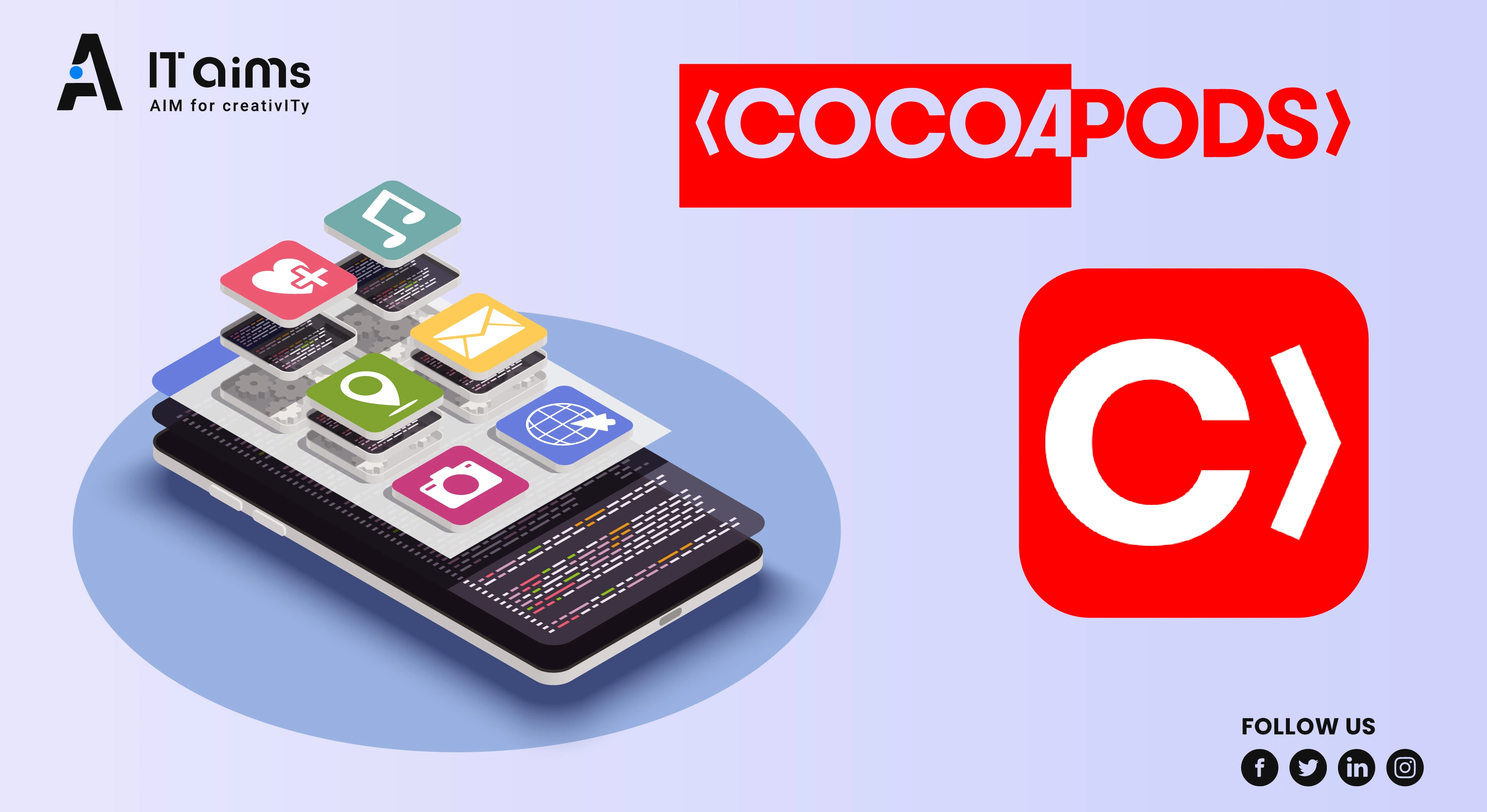
CocoaPods is a dependency manager for iOS projects that simplifies the process of adding third-party libraries and frameworks to an iOS app. It is an open-source project that is widely used by iOS developers to manage dependencies and streamline the development process. CocoaPods has a vast repository of over 90,000 libraries, making it easier for developers to find and integrate the necessary components into their projects.
Features:
- Easy installation and setup process
- Simple to use interface for adding and managing dependencies
- Automatically manages dependencies and their versions
- Provides versioning control and rollback features
- Supports multiple dependencies for a single project
- Integrates with Xcode projects seamlessly
- Offers a vast library repository with numerous third-party libraries available for integration
Pros:
- Saves time and effort in adding and managing dependencies
- Simplifies the development process by handling dependency conflicts
- Provides a centralized location for managing all dependencies
- Frees developers from the burden of manual dependency management
- Enables developers to focus on app development rather than dependency management
Cons:
- Requires an internet connection for adding and updating dependencies
- Some libraries may not be available on the repository, requiring manual integration
- May have compatibility issues with certain versions of Xcode or Swift.
4. Alamofire

Alamofire is a popular networking library for iOS app development, written in Swift. It provides a range of features, including HTTP request and response handling, authentication, and caching. One of the key benefits of Alamofire is its simplicity and ease of use. Its intuitive API allows developers to write network requests in just a few lines of code, reducing the amount of boilerplate code needed in an app. Alamofire provides a range of features, including authentication, caching, and request chaining.
Features:
- Simplifies the process of making HTTP requests and handling responses.
- Supports various HTTP methods such as GET, POST, PUT, DELETE, and PATCH.
- Provides built-in response serialisation for JSON, XML, and Property List formats.
- Offers a wide range of features, including file uploads, request and response validation, authentication, and more.
- Allows developers to create custom response serializers and authentication handlers.
Pros:
- Simplifies networking tasks and reduces code complexity.
- Saves time by providing pre-built features and easy-to-use APIs.
- Supports Swift language features such as generics, closures, and type inference.
- Provides excellent community support and documentation.
- Supports both iOS and macOS development.
Cons:
- Can be overwhelming for beginners due to its extensive feature set.
- The library updates frequently, which can make it difficult to keep up with the latest changes.
- Requires a bit of learning to understand its features and how to implement them effectively.
5. AppCode

AppCode is another popular IDE for iOS app development, which is developed by JetBrains. It is known for its ability to provide intelligent coding assistance, debugging, and refactoring tools. AppCode supports multiple programming languages, including Swift, Objective-C, and C++, and offers features like code highlighting, completion, and inspection, making it easier for developers to write code quickly and efficiently. AppCode also provides integration with various version control systems like Git and Mercurial and can work with various iOS frameworks like CocoaPods and XCTest.
Features of AppCode
- Intelligent coding assistance
- Debugging and refactoring tools
- Code highlighting, completion, and inspection
- Integration with version control systems
- Support for multiple programming languages
- Compatible with various iOS frameworks
Pros of AppCode
- Offers intelligent coding assistance that can help developers write code quickly and efficiently
- Provides advanced debugging and refactoring tools that can help developers identify and fix issues more easily
- Supports multiple programming languages and can work with various iOS frameworks
- Provides integration with various version control systems like Git and Mercurial
Cons of AppCode
- AppCode is not as widely used as Xcode, which means that there may be fewer resources and support available compared to Xcode
- AppCode can be more expensive than some other iOS development tools, which may not be suitable for small-scale or indie developers.
6. Firebase
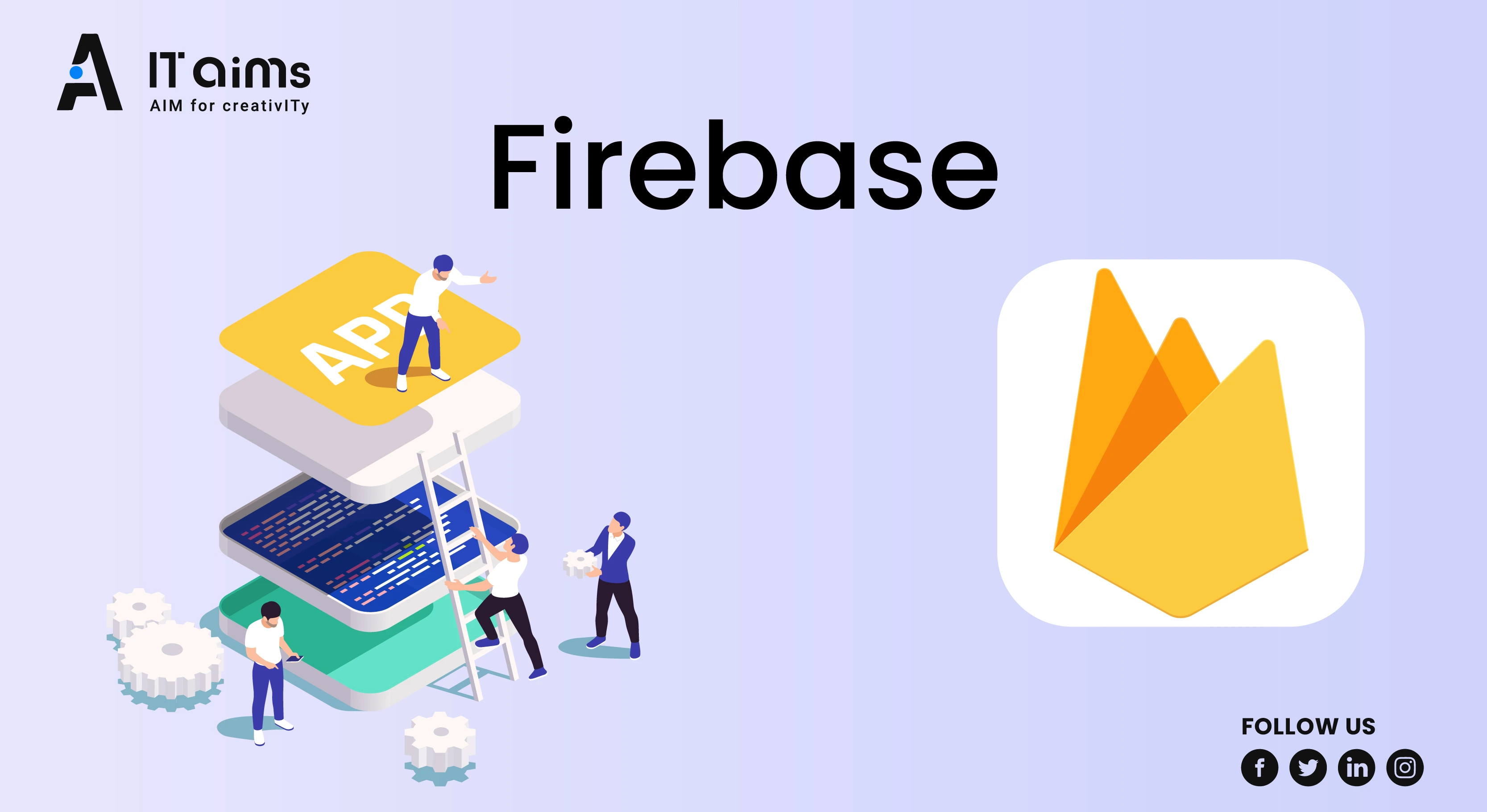
Firebase is a mobile platform that helps developers to build high-quality apps quickly. It provides a range of services, including cloud storage, real-time databases, authentication, and analytics. Firebase enables developers to build the backend functionality for their iOS apps without worrying about server management. Firebase provides a range of features and services that can help developers to create successful iOS apps. Here are some of the key features, pros, and cons of Firebase:
Features:
- Cloud Storage: Firebase provides cloud storage that enables developers to store and sync user data in real time. It also offers automatic scaling and backup options.
- Real-time Database: Firebase's real-time database enables developers to build responsive and dynamic apps that can update data in real-time.
- Authentication: Firebase provides easy and secure authentication options that can be integrated into iOS apps.
- Analytics: Firebase's analytics feature provides valuable insights into user behavior and app performance.
- Hosting: Firebase provides a reliable and scalable hosting service that allows developers to deploy their iOS apps quickly.
Pros:
- Easy to use: Firebase is easy to use and integrate into iOS apps, even for developers who are new to the platform.
- Real-time updates: Firebase's real-time database enables developers to create apps that can update data in real-time, providing a better user experience.
- Scalability: Firebase can scale automatically, so developers do not need to worry about server management or scaling.
- Security: Firebase provides secure authentication options that can be easily integrated into iOS apps.
Cons:
- Limited customization: Firebase's services have limited customization options, which can be a drawback for developers who require more flexibility.
- Vendor lock-in: Firebase is a proprietary platform, which means that developers are locked into using Firebase's services.
Famous apps built with Firebase
- The Meet Group: A social networking app that enables users to meet and chat with new people. It uses Firebase's real-time database to provide a responsive and dynamic user experience.
- Instacart: A popular grocery delivery app that uses Firebase's cloud storage and authentication services to provide a seamless and secure experience for users.
7. Sketch
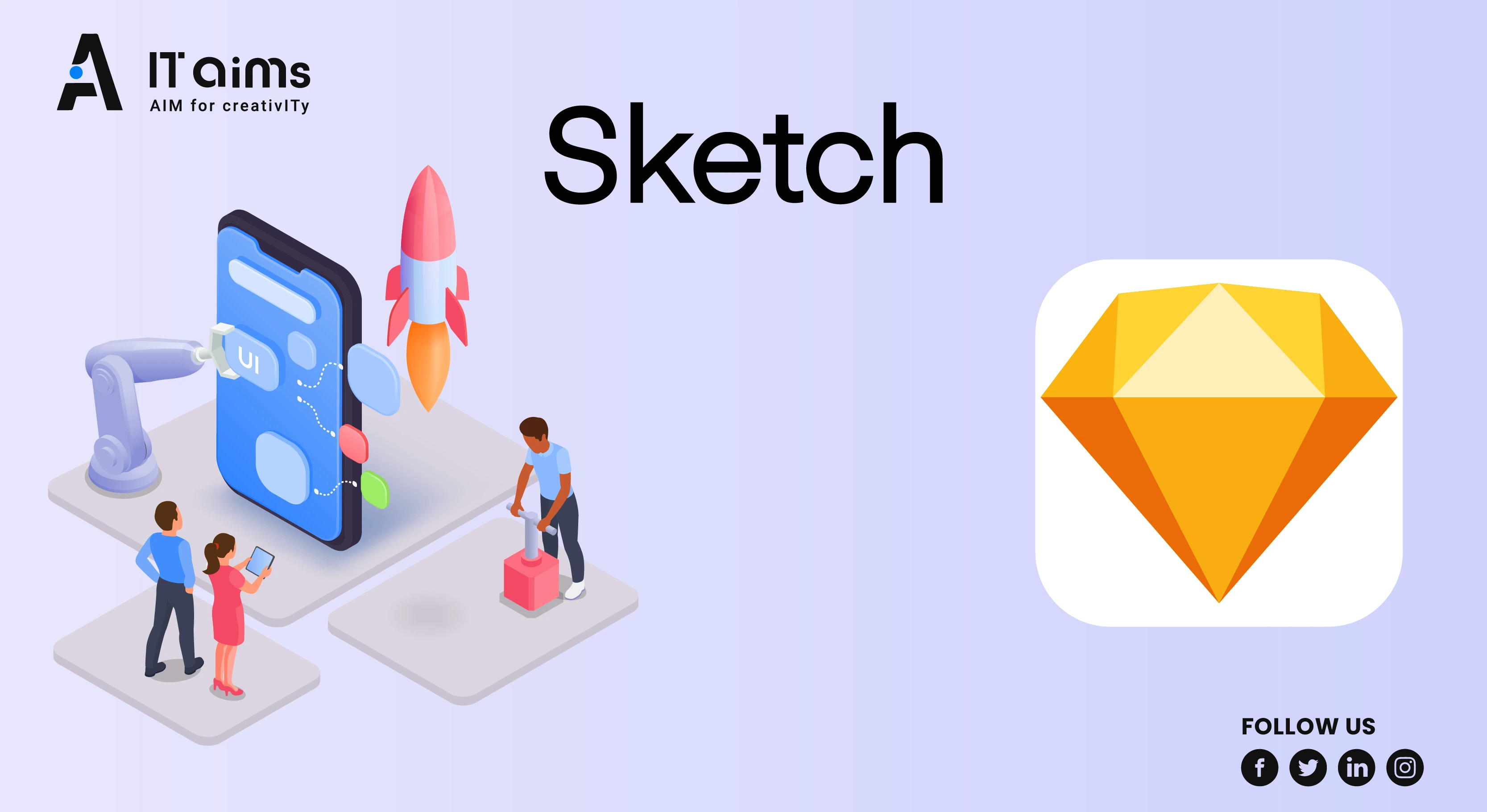
Sketch is a vector graphics editor that is widely used in iOS app development. It provides a range of features, including artboards, symbols, and vector editing tools, making it easier for designers to create stunning graphics and icons for iOS apps. Sketch also integrates with popular tools like Zeplin, making it easier for developers to work with designers. Here are some of the features, pros, and cons of Sketch:
Features:
- Artboards: Sketch provides a flexible canvas for designing and prototyping app screens, with the ability to easily resize, duplicate, and organize artboards.
- Symbols: Designers can create reusable symbols for buttons, icons, and other UI elements, making it easy to maintain consistency throughout the app.
- Vector editing tools: Sketch has a powerful set of vector editing tools that enable designers to create and edit shapes, paths, and text with ease.
- Integration with other tools: Sketch integrates with popular design tools like Zeplin, making it easy for developers to access design assets and specs.
Pros:
- Easy to use: Sketch has a simple and intuitive interface, making it easy for designers to learn and use.
- Flexible: Sketch provides a flexible canvas for designing app screens, with the ability to easily resize, duplicate, and organize artboards.
- Powerful vector editing tools: Sketch has a powerful set of vector editing tools that enable designers to create and edit shapes, paths, and text with ease.
- Integration with other tools: Sketch integrates with popular design tools like Zeplin, making it easy for developers to access design assets and specs.
Cons:
- Limited platform support: Sketch is primarily designed for macOS, and while there are plugins available for Windows and Linux, they may not provide the same level of functionality as the macOS version.
- Limited collaboration features: Sketch does not have robust collaboration features, making it more difficult for designers to work together on a project.
- Learning curve: While Sketch is relatively easy to use, it does have a learning curve, particularly for designers who are new to vector graphics editors.
8. TestFlight

TestFlight is a beta testing platform that enables developers to test their iOS apps with a group of selected testers. It provides a range of features like in-app feedback, crash reporting, and metrics, making it easier for developers to get feedback from their testers and fix issues before launching the app in the App Store. Some of the key features of TestFlight include:
Features:
- Beta Testing: TestFlight allows developers to invite up to 10,000 testers to try out their app before launching it in the App Store.
- In-app Feedback: Testers can provide feedback within the app by taking screenshots and sending comments to the developer.
- Crash Reporting: Developers can receive real-time crash reports from testers and fix issues before launching the app in the App Store.
- Metrics: TestFlight provides developers with metrics such as installation rates, retention rates, and engagement rates, making it easier to analyze user behavior and improve the app.
Pros:
- Easy to Use: TestFlight is user-friendly and easy to set up, even for developers who are new to the platform.
- Free: TestFlight is a free platform that can save developers money on expensive third-party testing tools.
- Integration: TestFlight is tightly integrated with Xcode, Apple's official IDE for iOS app development.
Cons:
- Limited Testing Period: TestFlight beta builds are only valid for 90 days, which can be limiting for apps that require longer testing periods.
- Limited Number of Testers: While TestFlight allows developers to invite up to 10,000 testers, this may not be enough for larger apps that require extensive testing.
- Apple Devices Only: TestFlight is only available for iOS and tvOS devices, so developers looking to test apps on other platforms will need to use alternative testing tools.
In conclusion, the above-mentioned iOS development tools will be the best in 2023, and developers should be familiar with these tools to create high-quality iOS applications. By using these tools, developers can create apps that are reliable, secure, and provide an excellent user experience. Whether you're an experienced iOS developer or just getting started, these tools will help you take your iOS app development skills to the next level.
FAQs
- Q.1: What is the future of iOS development 2023?
Based on current trends and advancements, here are some possible directions for iOS development in 2023: Continued focus on privacy: Apple has always prioritized user privacy and security, and this is likely to continue in the future. Developers will need to keep up with the latest privacy features and guidelines, such as App Tracking Transparency, to ensure their apps comply with Apple's policies. Increased adoption of SwiftUI: SwiftUI is a new declarative UI framework introduced by Apple in 2019, and it has been gaining popularity among iOS developers. It allows for faster and easier development of user interfaces, and we may see more apps built with SwiftUI in the future. Greater use of machine learning: Apple's Core ML framework allows developers to easily integrate machine learning models into their apps, and we may see more apps incorporating machine learning in the future. This could include features such as image recognition, natural language processing, and predictive analytics. Growth of augmented reality: Apple's ARKit framework enables developers to create immersive augmented reality (AR) experiences on iOS devices, and we may see more apps incorporating AR in the future. This could include AR games, shopping experiences, and education and training apps. Overall, the future of iOS development is likely to continue to focus on innovation, privacy, and ease of use, with an increasing emphasis on emerging technologies such as machine learning and augmented reality.
- Q.2: Is iOS developer a good career in 2023?
iOS development is currently a lucrative and in-demand career with a promising outlook in the coming years. Here are a few reasons why: Growing demand: iOS devices, such as iPhones and iPads, continue to be popular around the world, and the demand for high-quality iOS apps is also increasing. This means that there will be a continued need for skilled iOS developers to meet this demand. Competitive salary: iOS developers are currently in high demand, which means that they can command competitive salaries and benefits. According to Glassdoor, the average salary for an iOS developer in the United States is around $110,000 per year. Career growth opportunities: As technology continues to evolve, iOS developers will have opportunities to learn new skills and work on cutting-edge projects. This can lead to career growth and advancement within the industry. Flexibility and remote work: Many iOS development jobs offer flexible working arrangements, including remote work options. This can provide a good work-life balance and the ability to work from anywhere. Overall, iOS development is a good career choice for those with a passion for technology and a desire to work on innovative projects. With the growing demand for iOS apps, competitive salaries, and opportunities for career growth and flexibility, iOS development is a promising career path in 2023 and beyond.
- Q.3: How to become iOS developer 2023?
Becoming an iOS developer in 2023 will require a combination of education, practical experience, and a willingness to continually learn and adapt to the latest trends and technologies. Here are some steps you can take to become an iOS developer: Learn programming fundamentals: Before diving into iOS development, it's essential to have a solid understanding of programming concepts and fundamentals. Start with a programming language like Swift or Objective-C, and learn the basics of variables, data types, functions, loops, and conditional statements. Enroll in an iOS development course: There are many online courses and tutorials available that can teach you the specific skills you need to become an iOS developer. Some popular online platforms that offer iOS development courses include Udemy, Coursera, and Pluralsight. Build your portfolio: As you learn iOS development, start building your own projects to add to your portfolio. This will demonstrate your skills and expertise to potential employers or clients. You can also contribute to open-source iOS projects to gain practical experience and make connections in the iOS development community. Join developer communities: There are many online and offline communities of iOS developers that you can join to learn from others, ask questions, and stay up-to-date on the latest trends and technologies in iOS development. Some popular online communities include Reddit's iOSProgramming and iOS Developers Slack group. Attend conferences and workshops: Attending iOS development conferences and workshops can help you stay up-to-date with the latest trends and technologies in the field. Some popular conferences and workshops include WWDC (Apple's Worldwide Developers Conference), CocoaConf, and RWDevCon. Apply for iOS development jobs or freelance work: Once you have built up your skills and portfolio, start applying for iOS development jobs or freelance work. Look for job postings on job boards such as Indeed and LinkedIn, or consider working as a freelancer on platforms like Upwork and Freelancer. Becoming an iOS developer requires hard work, dedication, and a willingness to continually learn and improve. By following these steps and gaining practical experience, you can become a successful iOS developer in 2023 and beyond.
- Q.4: What is the highest salary for iOS developer in India?
The highest salary for an iOS developer in India can vary depending on a number of factors, such as location, experience, company size, and industry. However, according to Glassdoor, the average salary for an iOS developer in India is around INR 8,00,000 per year, with salaries ranging from INR 3,00,000 to INR 25,00,000 per year. In some cases, experienced iOS developers working for large companies or in high-demand industries may be able to command salaries in excess of INR 25,00,000 per year. However, these high salaries are relatively rare and usually reserved for senior developers with many years of experience and specialized skills. It's important to note that salary is just one factor to consider when choosing a career as an iOS developer. Other factors, such as job satisfaction, work-life balance, and opportunities for career growth and learning, should also be taken into account when evaluating job offers and career paths.
- Q.5: Is it difficult to learn Swift?
The difficulty of learning Swift can vary depending on your prior programming experience and the resources you use to learn the language. However, overall, Swift is considered to be a relatively easy language to learn compared to other programming languages. Here are a few reasons why Swift is considered to be relatively easy to learn: Modern syntax: Swift has a modern, easy-to-read syntax that is similar to many other popular programming languages. This makes it easy for programmers to understand and write Swift code, even if they are new to the language. Easy to use Xcode IDE: Xcode is the primary development environment for Swift, and it is known for its ease of use and intuitive interface. This makes it easy for developers to write, test, and debug Swift code. Extensive documentation: Swift has extensive documentation and a large community of developers who share their knowledge and expertise through blogs, forums, and other resources. This makes it easy to find answers to your questions and learn from others who are more experienced with the language. Swift Playgrounds: Apple's Swift Playgrounds is an interactive learning environment that makes it easy for beginners to learn Swift. With Swift Playgrounds, you can learn Swift concepts through puzzles, games, and other interactive exercises. Overall, while learning any new programming language requires time and effort, Swift is generally considered to be a relatively easy language to learn, especially if you have prior programming experience. With the right resources and a willingness to learn, you can become proficient in Swift and start building your own iOS apps in no time.
- Q.6: Will iPhone still work in 2023?
Yes, iPhones will still work in 2023. Apple has a history of supporting their devices for many years after their initial release, typically providing software updates for at least five years. For example, the iPhone 6s, which was released in 2015, received software updates until 2020, and the iPhone 5s, which was released in 2013, received updates until 2018. Assuming that you keep your iPhone updated with the latest software releases, it should continue to function normally in 2023 and beyond. However, it's worth noting that as devices get older, they may start to experience performance issues or have limited compatibility with newer apps and software. In addition, as technology continues to advance, newer iPhone models may offer features and capabilities that are not available on older models. Overall, while your iPhone should still work in 2023, it's a good idea to keep an eye on new releases and consider upgrading to a newer model if your current phone starts to feel outdated or if you encounter any issues with performance or compatibility.
Popular Searches
Tags:


